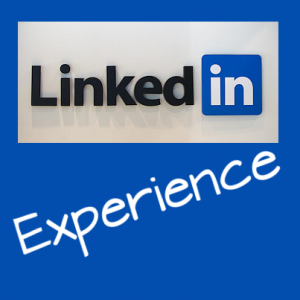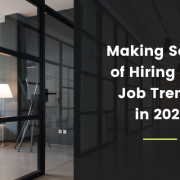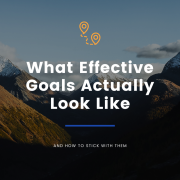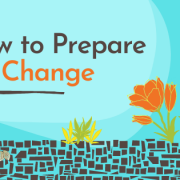What to Include in Your LinkedIn Experience Section
LinkedIn Some people think this is the most important section. It is helpful to telling your career story, but don’t overlook your headline and summary sections. I’ve gone into more detail about headlines and summaries on my blog.
Some people think this is the most important section. It is helpful to telling your career story, but don’t overlook your headline and summary sections. I’ve gone into more detail about headlines and summaries on my blog.
Bottom line about the experience section: It’s the part of your LinkedIn profile that feels most like your resume. What do I mean? It’s your employment history. It’s where you’ll list your job title, employer and dates of employment.
Here are the top three questions I get about the experience section to help you:
- Can I just cut and paste sections from my resume?
No. Lots of experts recommend replicating what’s on your resume, so let me explain why I don’t recommend the ole cut n’ paste. Your LinkedIn profile isn’t a resume. It’s a snapshot of you as a professional. Focus on providing detail in a way which allows someone outside of your industry to understand what you do. Accomplishments are good. So is using simple, straightforward language. Why? Well, if only industry insiders understand what you do, you’ve created a barrier to expanding your network (and really, isn’t that one of the main reasons you’re on LinkedIn anyway?) Don’t keep this section too bare-bones though – you’ll miss out some of LinkedIn’s powerful search capabilities (meaning, others won’t be able to find you). Also, sometimes your job title doesn’t tell the whole story. Making sure you give some pertinent detail to what your experience entails is crucial. - I’ve had several short-term jobs so my employment history is getting spotty. Should I include all of them?
Depends. Never lie or be deceptive, but sometimes, including too much info (in any section of LinkedIn, not just experience) just doesn’t make sense. Again, it’s not your resume (which is more detailed than your LinkedIn profile) nor is it a job application (even more detailed than your resume, in general). So ask yourself – what makes sense? Are the positions related? Am I including information just to make it “complete” or am I including positions because they enhance my overall profile? Do they support your experience “thread” or do they detract from it? Don’t get caught up in trying to cover gaps. - I left an organization/job/situation on less-than-favorable terms. Can I omit it from my LinkedIn profile?
You can and I’m sure there are situations where this would be a sound decision. But here’s a caution: You can’t make it disappear from your history. Unless it was a short-term job, think twice before omitting it. Can you be sure that it won’t be odd that you don’t have it on your LinkedIn profile, yet it might be on your resume and/or application? Also, if you leave it off, it will make it harder to connect with individuals with whom you share that connection – say former colleagues or clients. Also, LinkedIn uses specific algorithms to suggest connections to help you grow your network, and omitting positions from your profile will impact this function. - What should I include in this section?
Bullet points are fine. But consider using the more casual language you would use if your old college roommate’s sister asked you what you do for a living. You wouldn’t tell her every one of your accomplishments while on the job (while you certainly would on your resume) instead, you’d describe it using practical, no-frills language. Perhaps with a few highlights (resembling resume accomplishments). Bingo. You want your resume and your LinkedIn profile to be consistent but they don’t have to be completely redundant. Borrowing from a term I learned in Viet Nam… they are “same same but different.”
A couple of tips about the experience section:
- You can change the order of your positions by using the “reorder” function when you’re editing this section.
- To add a company logo to your experience section, when you start typing the company name, you’ll see a list come up (if there’s a company page affiliated with the company name). Just choose the right one and the logo should appear in your experience section.
- Have work samples you want to showcase? Include links in the experience section.
Keywords are important in this section too, but don’t over-analyze the keywords in your profile. LinkedIn does not use a single rank for search results.
Here are some other interesting things to know about the weighting of keywords in LinkedIn.



